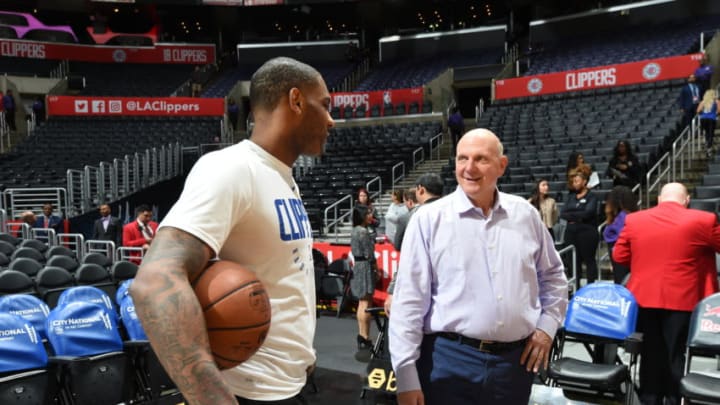For LA Clippers, Maintaining Cap Space is Key During Trade Season

Salary Cap: The Basics
Let’s start by looking at the team’s salary cap. I’ll be working off of Spotrac, which has a pretty comprehensive look at the Clippers 2019-20 cap situation.
Here are the basics. We have a hair over $60 million in guaranteed salaries for next season as of right now. The projected salary cap for next season is $109 million. Salary caps are easy to understand!
Well, they’re not. Enter the cap holds.
Cap Holds
So what is a cap hold? Per CBA Faq:
"Free agents continue to be included in team salary. By renouncing a player, a team gives up its right to use the Larry Bird, Early Bird, or Non-Bird exception to re-sign that player. A renounced player no longer counts toward team salary, so teams use renouncement to gain additional cap room. Teams are still permitted to re-sign renounced players, but only with cap room or an exception other than the Bird exception"
For the Clippers, this means every potential free agent for the team has a cap hold until they are renounced. Here are the guys and their respective holds:
- Tobias Harris – $22,200,000
- Marcin Gortat – $20,347,827
- Patrick Beverley – $9,551,351
- Milos Teodosic – $7,560,000
- Luc Mbah a Moute – $5,184,600
- Mike Scott – $5,184,600
- Incomplete Roster Charge – $3,560,648 (This can and will go up)
That’s a lot of money in holds, right? The amounts here basically prevent the Clippers from signing any big contracts until they start renouncing players. Like the quote says, if they renounce their rights to them they open up cap space. However, for each incomplete roster spot, they are charged the rookie minimum salary.
What if they don’t renounce a player? Can they sign them even if they are at the salary cap? Yes. If they have their Bird Rights.
Bird Rights
Named after Larry Bird himself, these rights are given to teams to help them keep their own players. The long-winded explanation is:
"This exception allows teams to exceed the cap in order to re-sign their own free agents, up to the player’s maximum salary. Teams are said to have “Bird rights” to players who qualify. To qualify for this exception a player essentially must play for three seasons without clearing waivers or changing teams as a free agent"
Why does this matter? It comes into play for a couple of guys on the roster should the Clippers want to retain them, but the main focus would be Tobias Harris. We’ll focus more on him later in the piece, but just keep this definition in mind. Note that if you want to use Bird Rights to re-sign someone, you cannot renounce their cap hold.
Veteran Minimum
Everyone is probably most familiar with this. Players can be signed above the cap for a minimum contract for up to two years. This is how teams like Golden State add those so called “ring chasers” each season while paying their stars.
That’s all we’ll focus on for today for the sake of simplicity. Now for the first scenario.